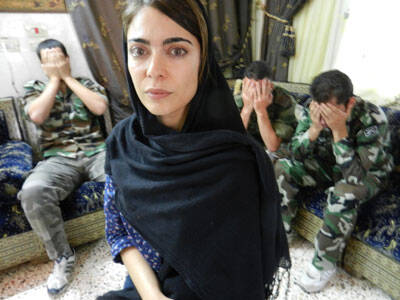I heard this joke in Syria in 1993: A man and his little son were riding the bus through Damascus where the streets were lined with giant portraits of the ruthless president-dictator Hafez al-Assad, known to have killed thousands of his political enemies. The little boy gazed in awe at the huge posters and asked his father, “Daddy, isn’t that the big, bad man you told us about, the one you hate?” At that the man quickly grabbed his son and held him up in the aisle and called out, “Anybody lose a child?”
As this is being written, Syria must decide whether to repeat the “Arab Spring” of Egypt and Tunisia and transition from dictatorship to the first steps of democracy; or of Libya, which went from protest to violence to the bloody death of its leader. If there is a third alternative, it has not shown its face.
I have seen the face of Syria and I loved it. From my month-long visit to Syria and Jordan in June-July 1993 three scenes are burned into my memory: the Omayyed Mosque, with a 3,000-year history that includes the tombs of both Saladin and the head of John the Baptist; the Street Called Straight, where St. Paul’s blindness was cured; and Hama, the lovely town on the Orontes River, where, in February 1982, President Hafez al-Assad, the father of the current president, put down an insurgency by slaughtering between 10,000 and 25,000 citizens. Today history is repeating itself.
Although Syria briefly accepted a proposal from the Arab League to remove tanks from the streets, halt violence aimed at protesters, and release 70,000 political prisoners in order to open dialogue with the protesters, the protests and slaughter continue. Apparently the regime thinks it can win by stalling for time. On Friday, October 28, another 40 were killed.
Meanwhile, according to The Economist deserters from the Syrian armed forces, with headquarters in Turkey, have organized the Free Syrian Army of 22 “battalions.” With supplies from Lebanon, they have begun to systematically take the offensive, usually in small attacks on individuals, in Hama, Homs and outside Damascus.
The best war correspondent for the Middle East is Robert Fisk, of the British paper The Independent. Based in Beirut, Fisk is now in Damascus, and is renowned for his courage, which includes a willingness to criticize both the United States and Israeli policies. Although foreign correspondents are not welcome in Syria, Fisk was invited to attend the funeral of two young Syrian soldiers, who had “died for President Bashar al-Assad,” lest the reading public think that only the protesters suffered. At the end of October, Syrian officers told him that 1,150 soldiers have been killed within the last seven months. Fisk finds that the citizens of Damascus live as if they are safe from the war, the city is a “bubble,” but they are terrified when they travel. He concludes that with the casualty figures—3,000 civilian dead in addition to the military—“is enough to frighten anyone.”
Throughout all this the PBS documentary series “Frontline,” produced by Wael Dabbous at Boston’s WGBH, has been editing its report up to the last minute. It has sent its reporter Ramita Navai to risk her life by “going underground” with the insurgency. In Syria Undercover, a documentary to air on Tuesday Nov. 8, she moves in darkness from city to city, holding out for three days with one rebel band as government troops arrest and beat suspects in adjacent apartments. Viewers see no heads or faces, but only blurs or lips and beards of rebel spokespersons—the father of a 14-year-old boy tortured and shot in the head; a funeral broken up by gun fire; secret hospitals working with medicines smuggled in from Lebanon and doctors threatened with imprisonment for treating rebel patients; deserters who quit because they had been forced to shoot protesters, including women and children. “I saw with my own eyes,” says one, “when my buddy beside me refused to shoot at the protesters, a sniper shot him in the head.”
For “Frontline,” The New York Times correspondent Anthony Shadid answers the question, what kind of man is Bashar el-Assad? Never slated to succeed his father and not interested in politics, he went away to England to become an eye doctor; but when his older brother died he had to take over. Western observers hoped that a British-educated doctor would have humanitarian instincts. He briefly posed as a reformer, but reverted to the control of his family, particularly his mother, who told him to be like Dad. As always, “Frontline” takes risks, asks questions and leaves its audience more thoughtful and informed than they were an hour before. They have not told us what will happen next week or month; but they have painted the most intimate picture of the Syrian crisis so far and have answered the question of what kind of man rules that poor, beautiful country today. How many TV programs do that?
Fisk, in Damascus following the killing of Qaddafi, asks various Syrians what they thought of his end. A government official fears that the West will use the behavior of the Libyan lynch mob to discredit Arabs in general. They will say, “See how Arabs behave. See how Muslims behave.” But Fisk is also struck by how Hillary Clinton stressed, right before Gaddafi’s lynching, “We hope he can be captured or killed soon.” In short, America routinely assassinates its enemies. And President Obama later added that Qaddafi’s death should be a lesson “to all dictators around the world.” He was sending Assad a message.






